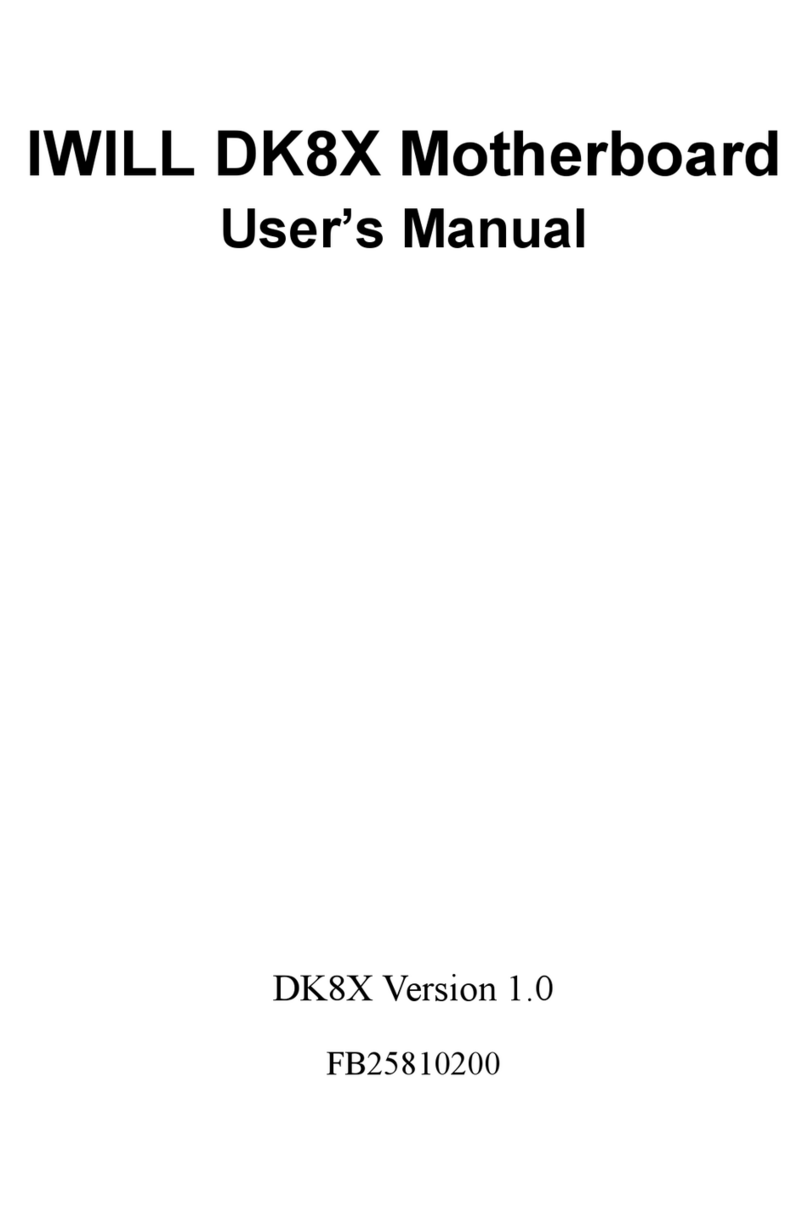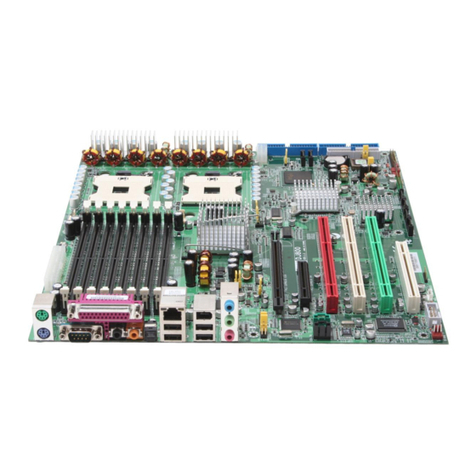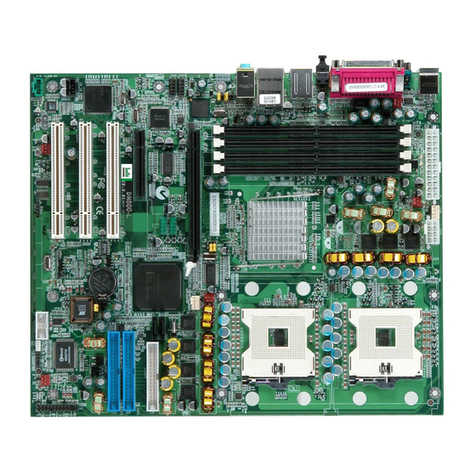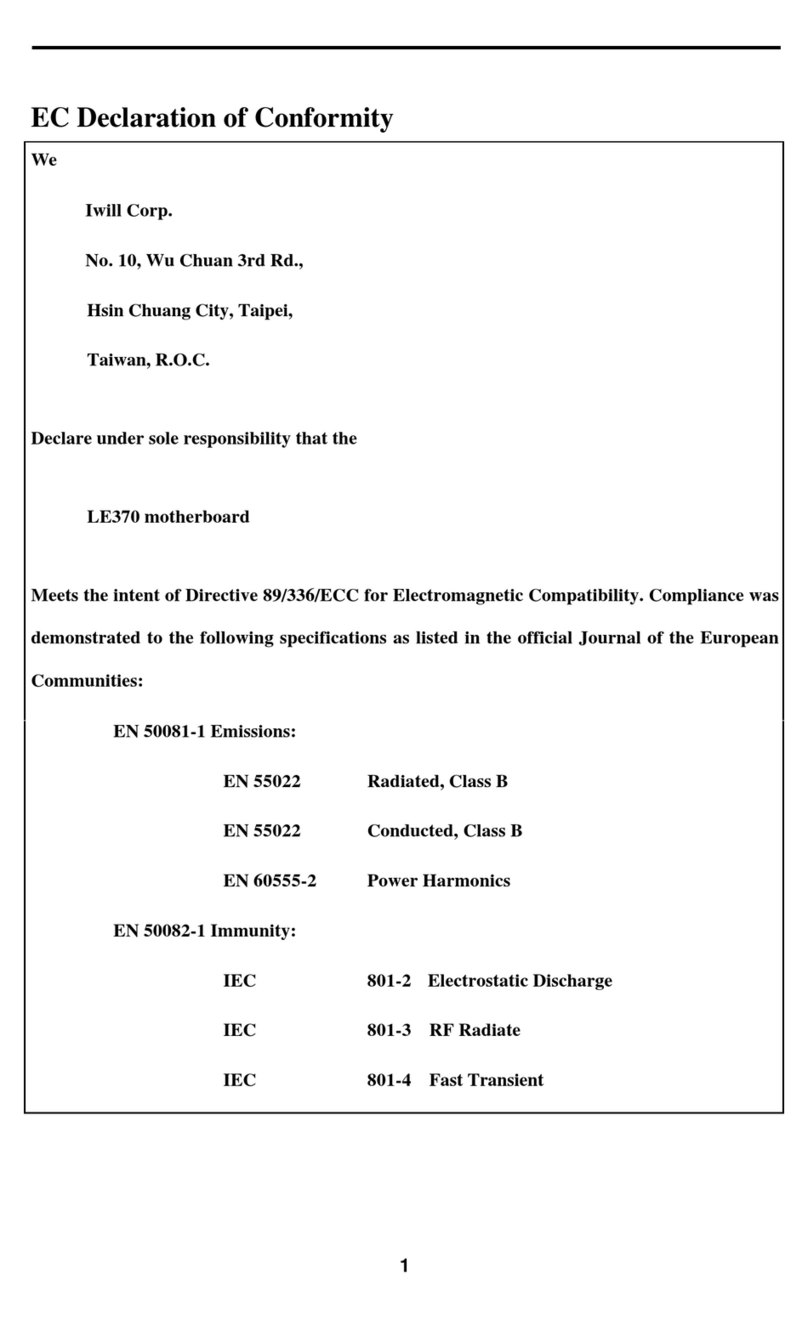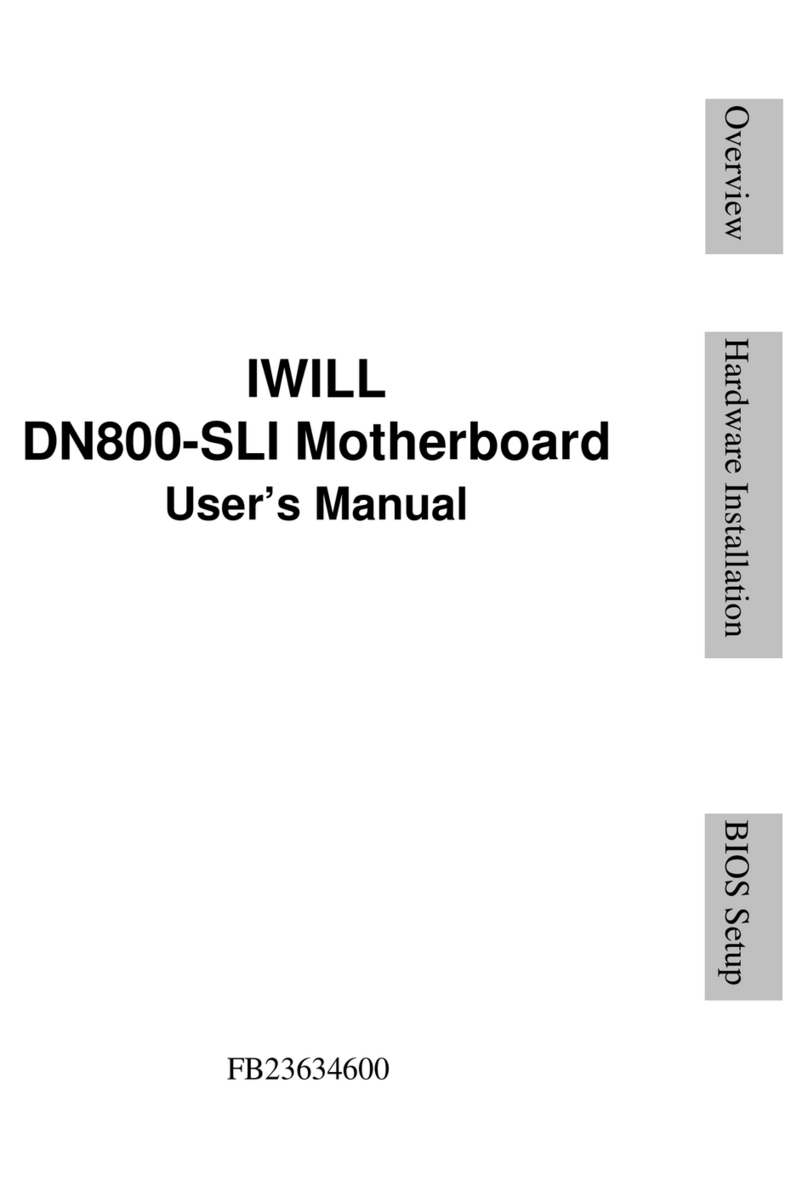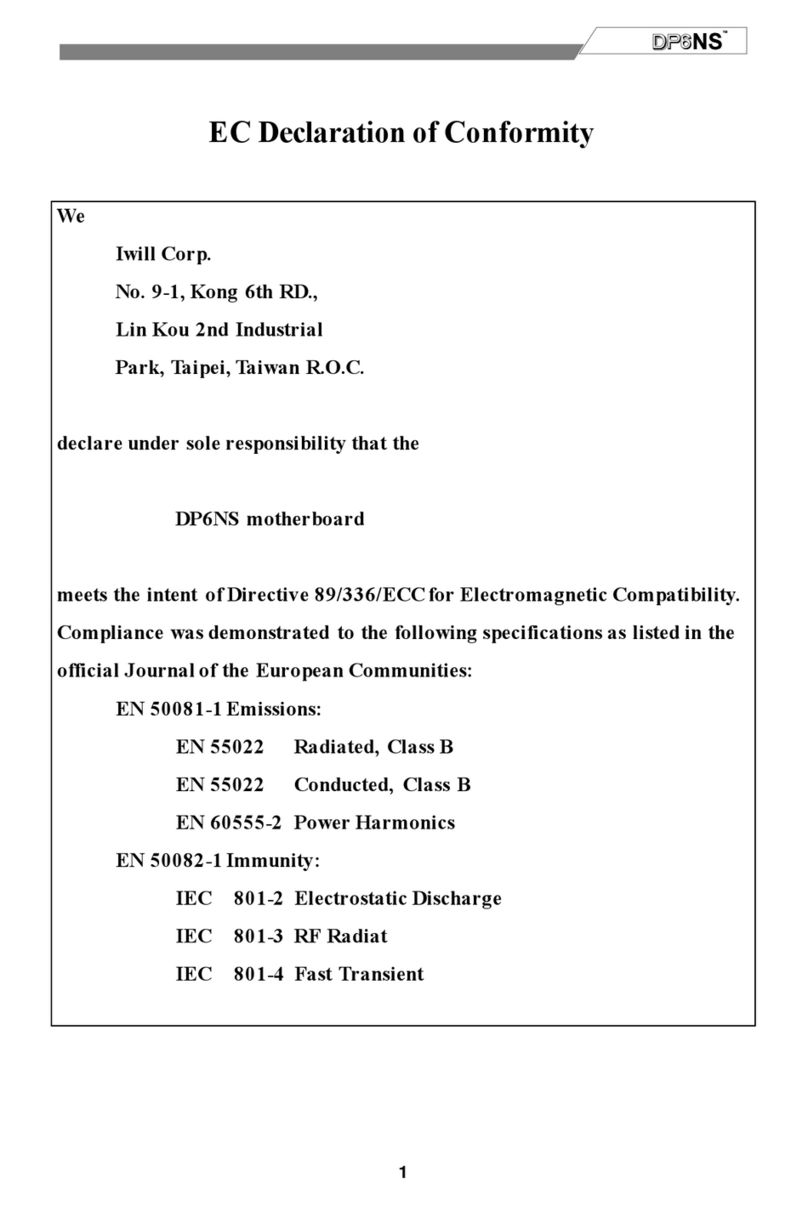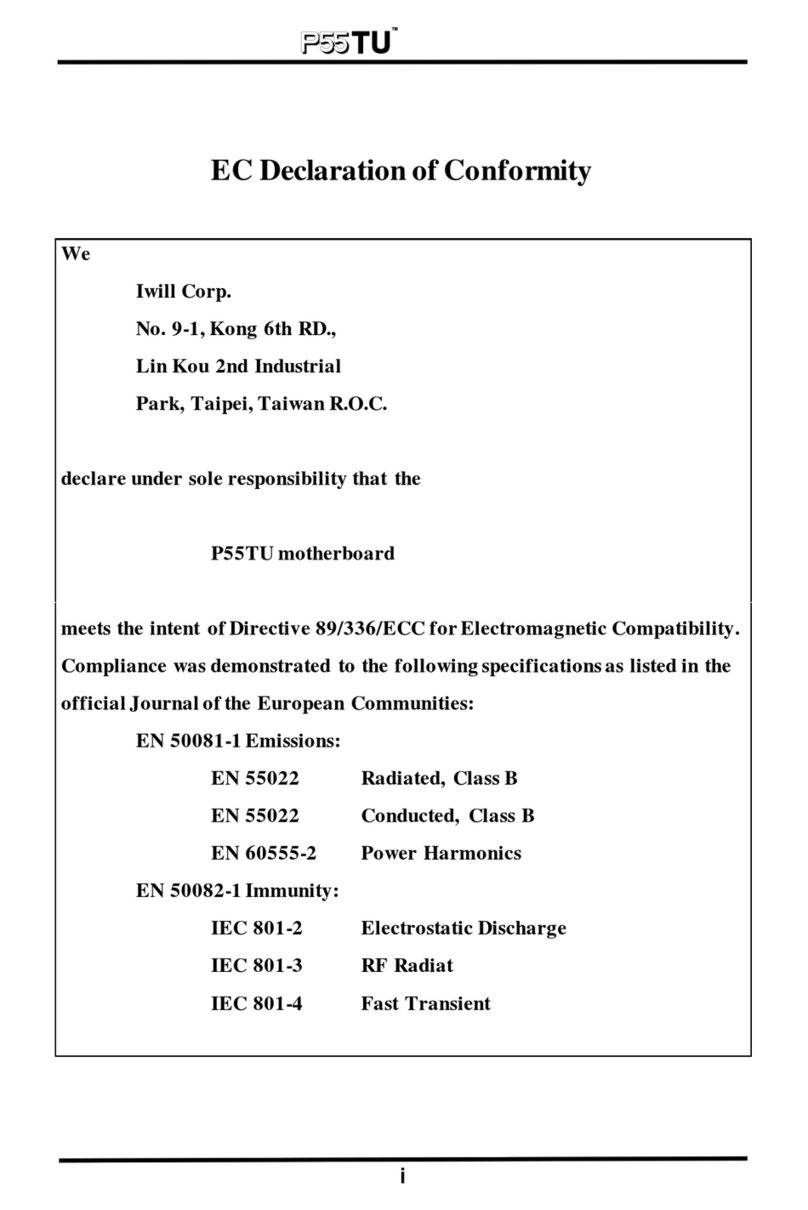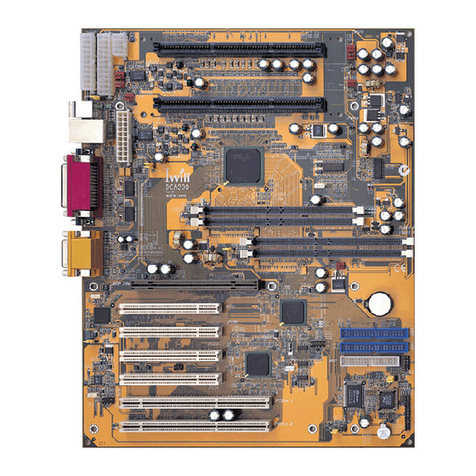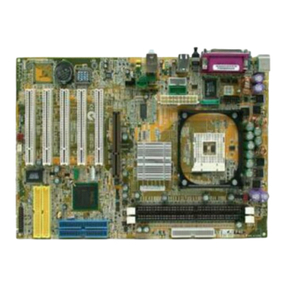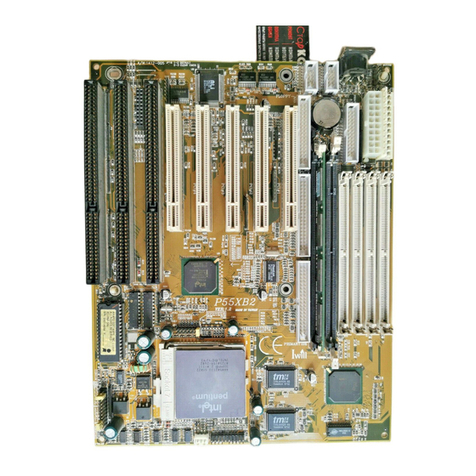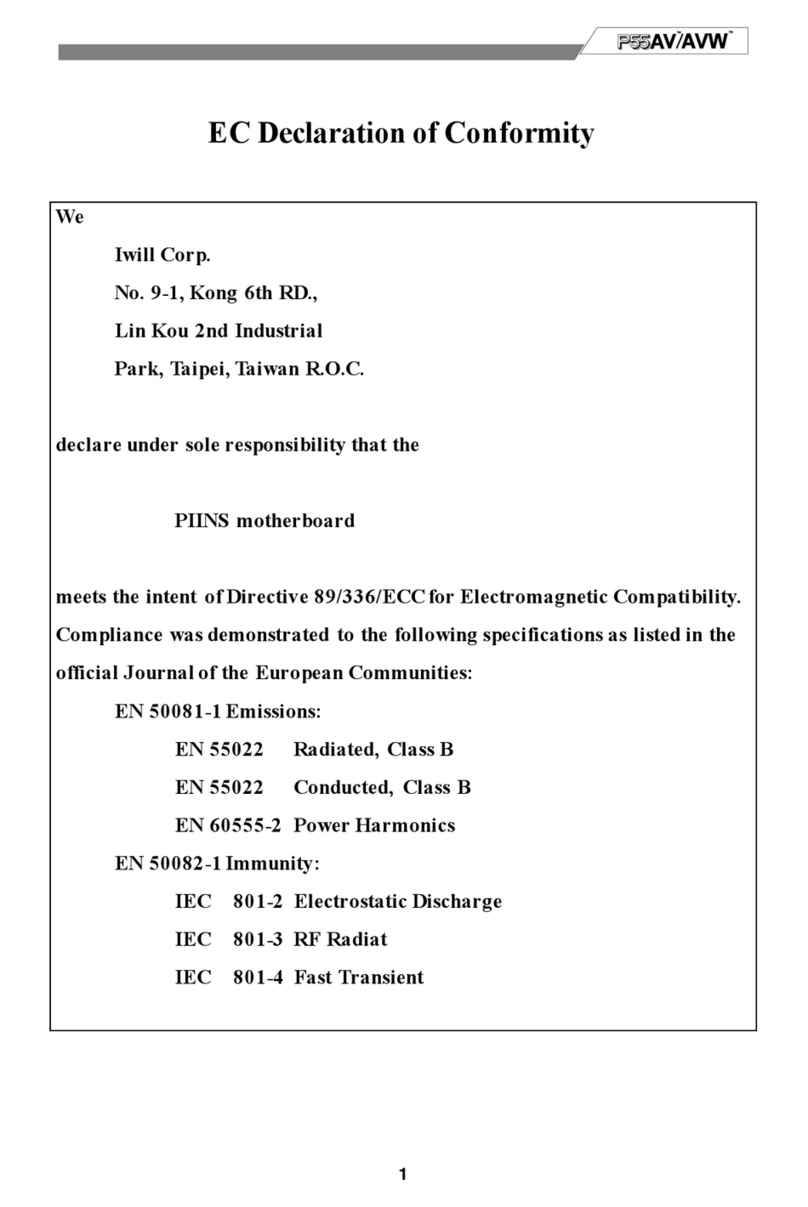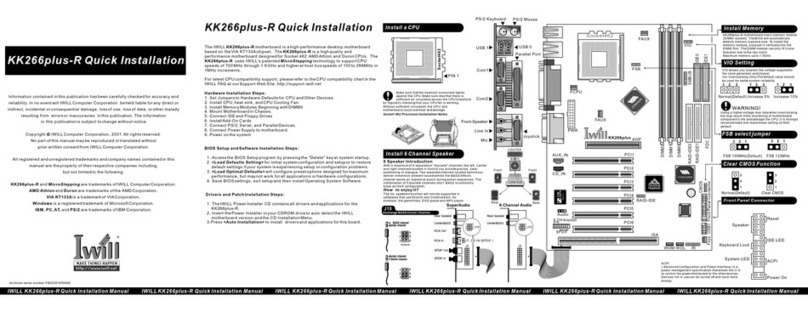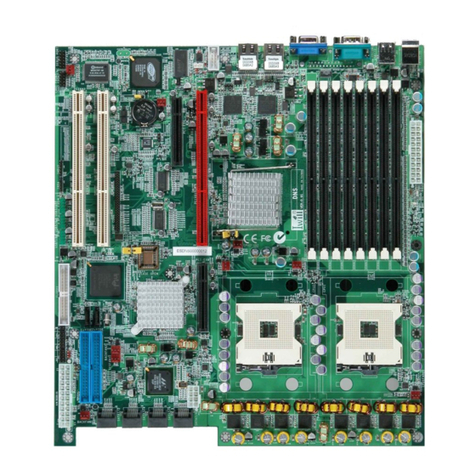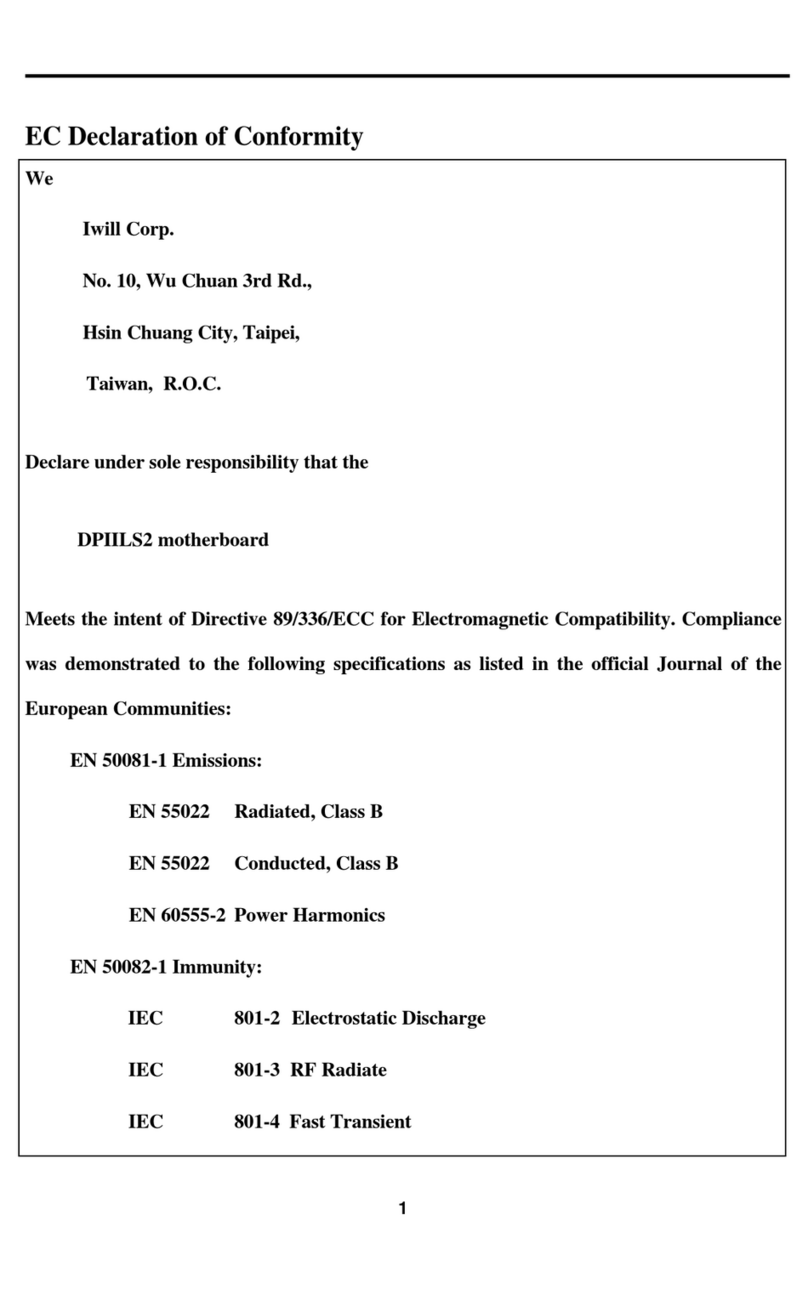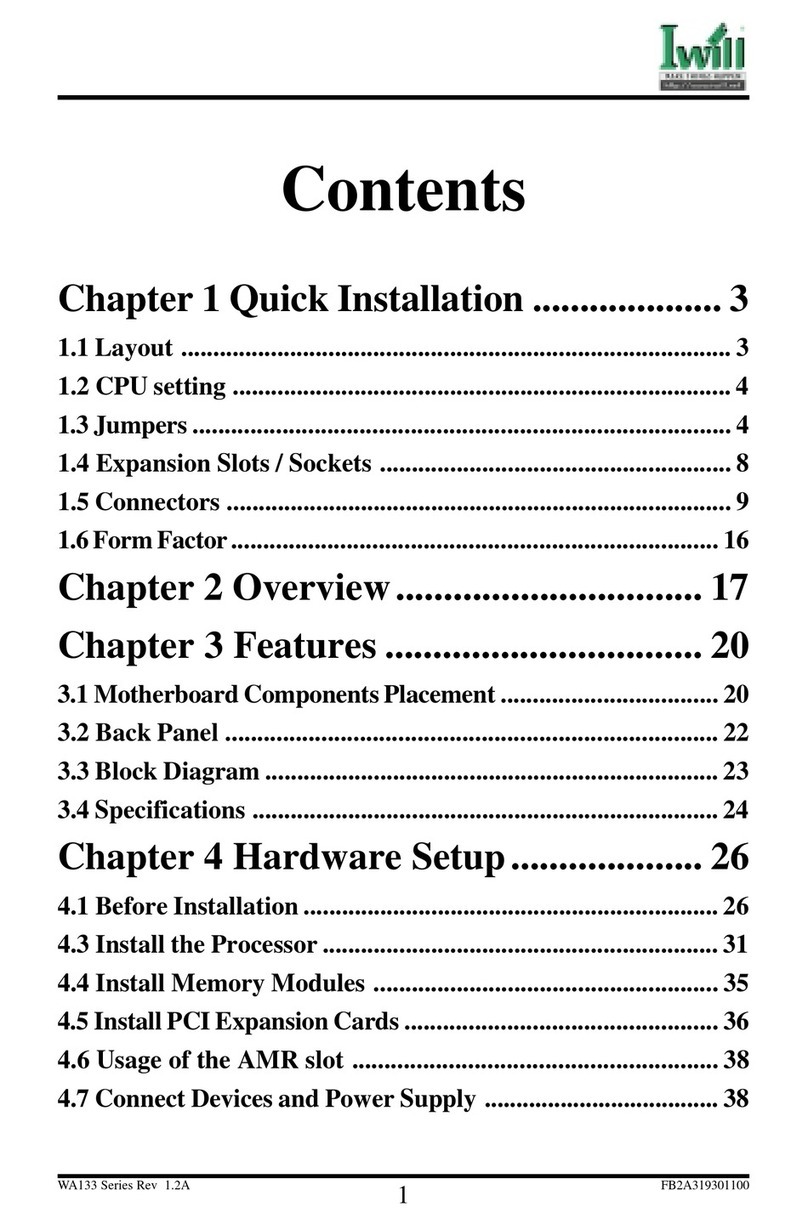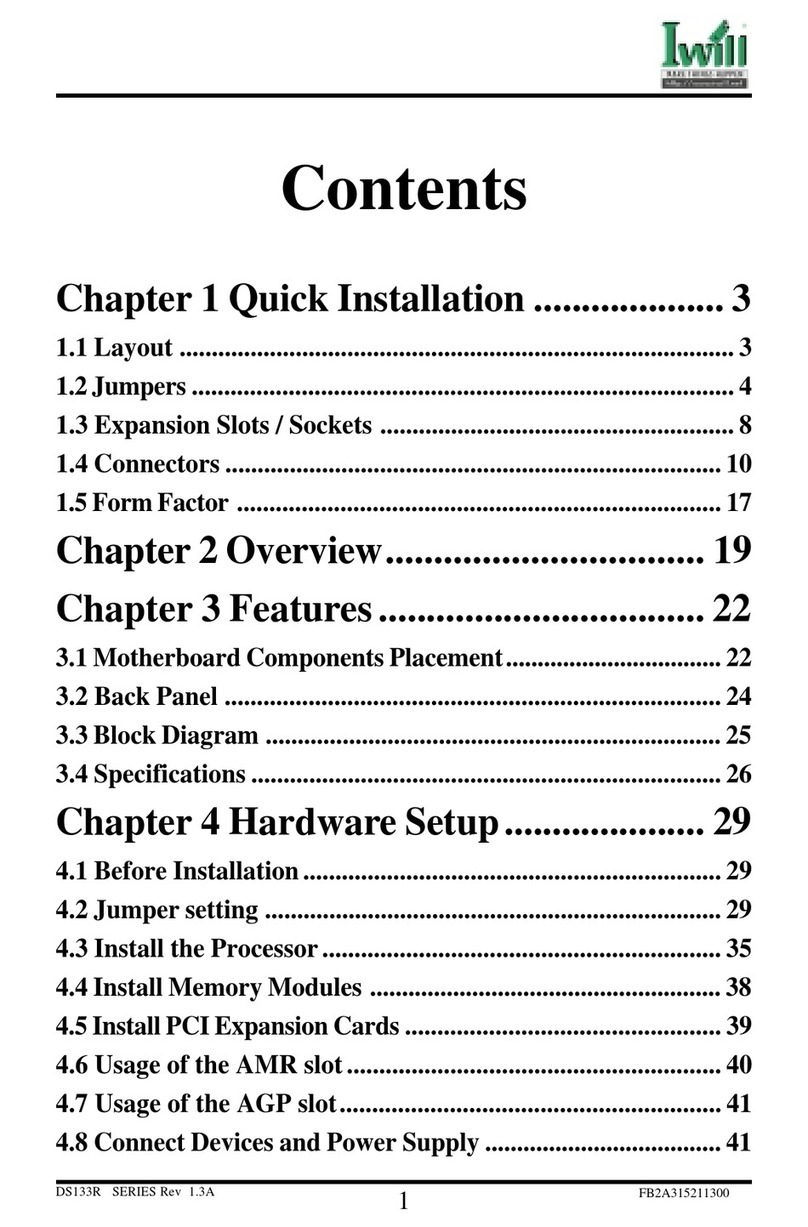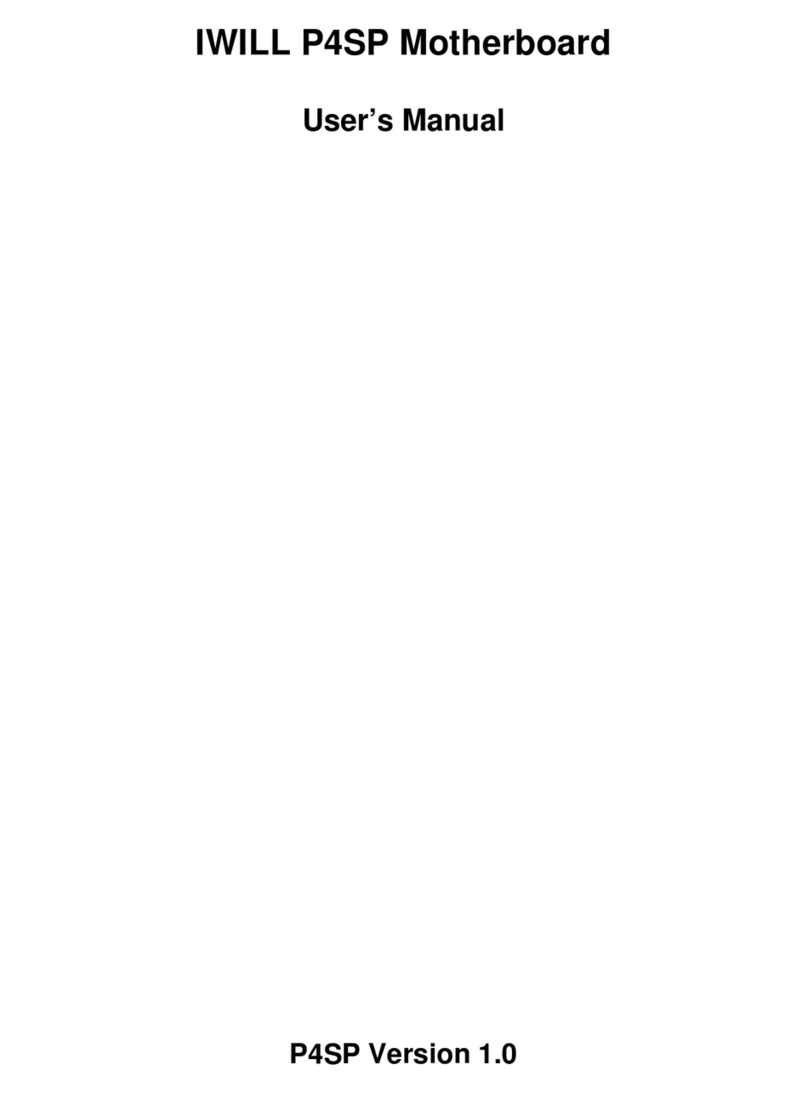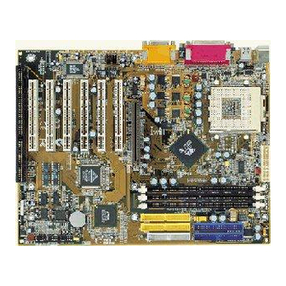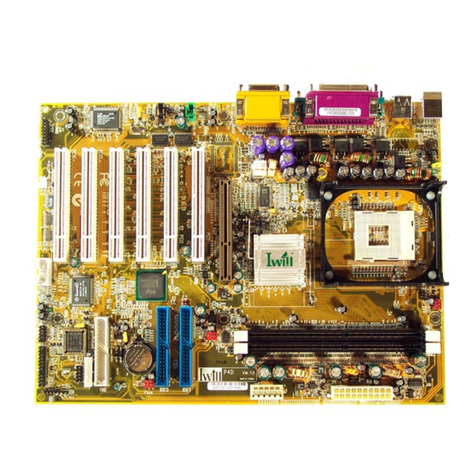
DP400 Motherboard
○○○○○○○○○○○○○○○○○○○○○○○○○○○○○○○○○○○○○○○○○○○○○○○○○○
User’s Manual VII
○○○○○○○○○○○○○○○○○○○○○○○○○○○○○○○○○○○○○○○○○○○○○○○○○○
5: System Configuration ....................................................... 5.1
Installing or Connecting Internal Peripherals .................................... 5.1
Installing an AGP Card....................................................................5.2
AGP Configuration ......................................................................5.2
Display Drivers ...........................................................................5.2
Connecting Internal Devices ............................................................5.3
Connecting IDE Devices ...............................................................5.3
Connecting a Floppy Disk Drive......................................................5.4
Connecting External System Peripherals ............................................ 5.6
Connecting a Display Monitor ..........................................................5.6
Connecting a Keyboard & Mouse.......................................................5.6
Configuring the CMOS Setup Utility .................................................. 5.8
The CMOS Setup Utility User Interface...............................................5.8
Running the CMOS Setup Utility ....................................................5.8
CMOS Setup Utility Program Sections .............................................. 5.10
Standard CMOS Features ............................................................ 5.12
Advanced Boot Options ............................................................. 5.13
Advanced Chipset Features ......................................................... 5.14
Integrated Peripherals............................................................... 5.15
Power Management Setup .......................................................... 5.16
PnP/PCI Configurations ............................................................. 5.17
Security Features...................................................................... 5.18
CPU Smart Setting .................................................................... 5.19
PC Health Status ...................................................................... 5.20
Load Fail-Safe Defaults.............................................................. 5.21
Load Optimized Defaults ............................................................ 5.21
Save & Exit Setup..................................................................... 5.21
Exit Without Saving .................................................................. 5.21
Installing an OS & Support Software ............................................... 5.22
Installing an Operating System ...................................................... 5.22
Multi-boot Option..................................................................... 5.22
Installing the Support Software ..................................................... 5.22
Installing Windows Drivers ......................................................... 5.23
Making Driver Discs ................................................................... 5.25
Making & Installing Linux Drivers ................................................ 5.26
Installing the Utility Software ....................................................... 5.26
